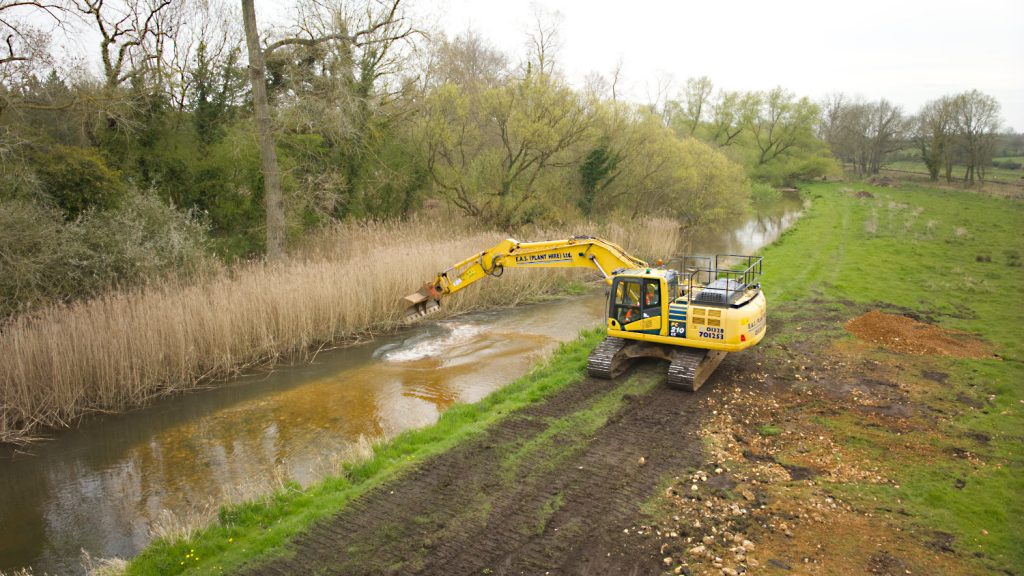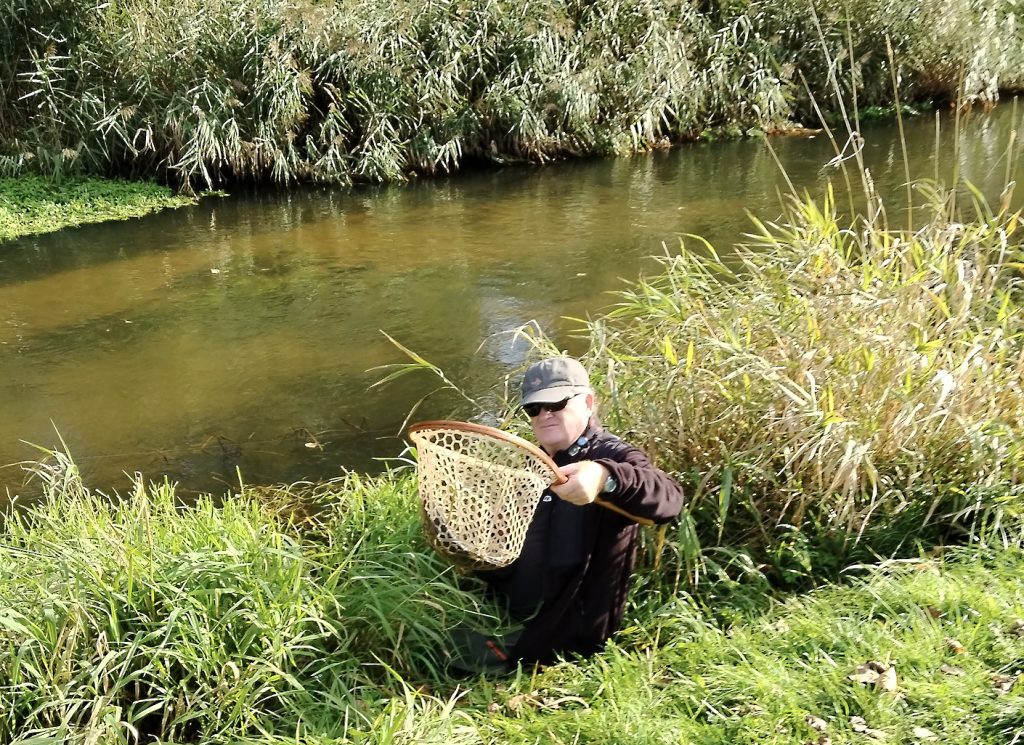River conservation work on the Wensum
At Bintry Mill we have been carrying out river conservation work on the Wensum for many years, and in addition to maintaining and improving the river and its banks, we closely monitor the water quality and the health of its inhabitants. This involves monthly surveys of the invertebrates in the river as part of the Anglers’ Riverfly monitoring iniative which has been done since 2011. This process provides us with an ongoing guide to trends and an early warning system of potential problems, but thankfully current trends show high levels of Gammarus, olives and blue winged olives, as well as large numbers of fry. We also have had high numbers of stoneflies in the recent past, all indicating good water quality and habitat.
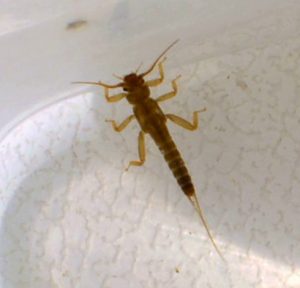
The Wensum was one of the river included in Salmon and Trout Conservation UK’s three year River Fly Monitoring Programme as part of its national riverfly census. The project involved three minute kick samples at five different locations in the Spring and again in the Autumn.

There are good and sometimes very good hatches of Mayfly from around the second week of May, through June and July and often into August and sometimes September as well when fish will still rise to a Mayfly imitation. At certain times of the season there can be good hatches of caddis and fish will often be seen feeding on hatching caddis pupae as they swim to the surface to hatch.

River Works
Some substantial and extensive river improvements have been carried out by the BMTF and with the Environment Agency. All the river works have been concentrated on improving the riverine habitat for the benefit of the river’s population of wild trout. The BMTF was the winner of the Wild Trout Trust Classic Malts’ 2001 Conservation Award for the Professional Category. This was for work on the Bintry Mill Beat.
The Environment Agency also carried out major work on the river between Yarrow Bridge and County School bridge. The works included re-profiling the river banks; raising the river bed; narrowing the river channel; installing flow deflectors; and creating gravel glides. The true right-hand bank was also fenced to prevent stock damage to the river bank. The Club is continuing this work with an ongoing programme of improvements to the river and the banks.
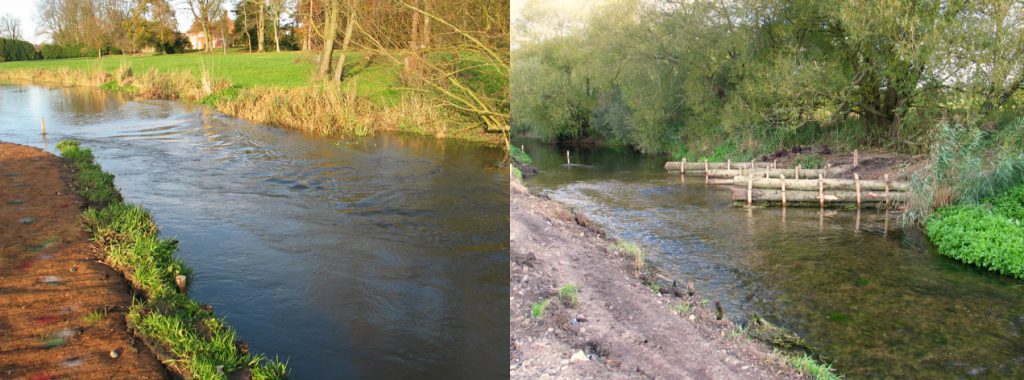
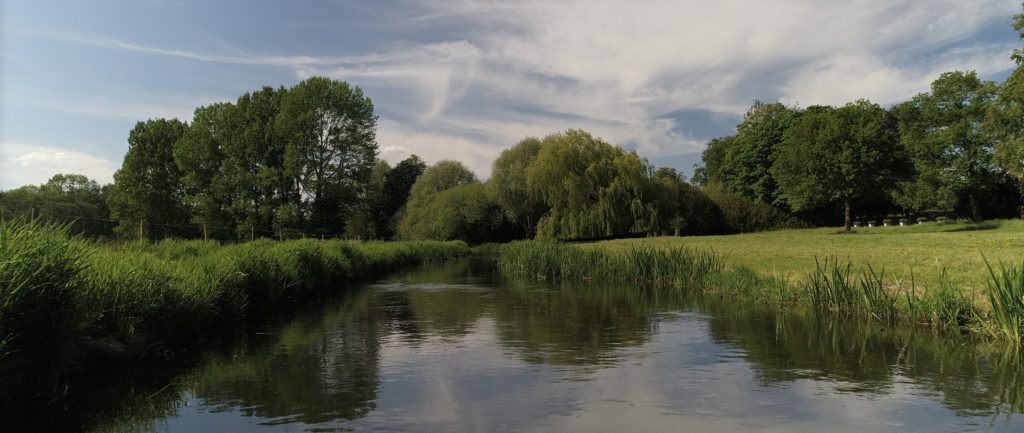
The BMTF has an ongoing programme of habitat improvement designed to improve the prospects of our resident wild trout population. The benefits extend to the rest of the river’s wildlife which is uniquely rich and varied.
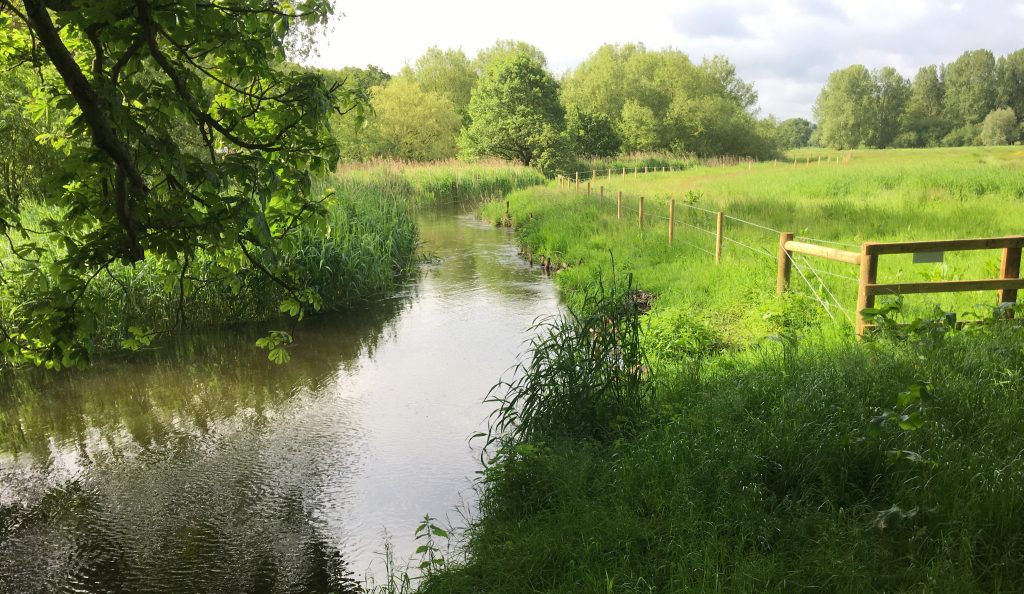
The latest project is a major restoration of the County School beat which has suffered from historic over dredging and straightening, resulting in a poor quality flow and habitat. It promises to be a long job, but the first stage, clearing the overgrown willows which were blocking much of the channel, has now been completed.
Since the video above was filmed, the river bed has been raised to create two new gravel glides which have transformed the productivity of this stretch.
